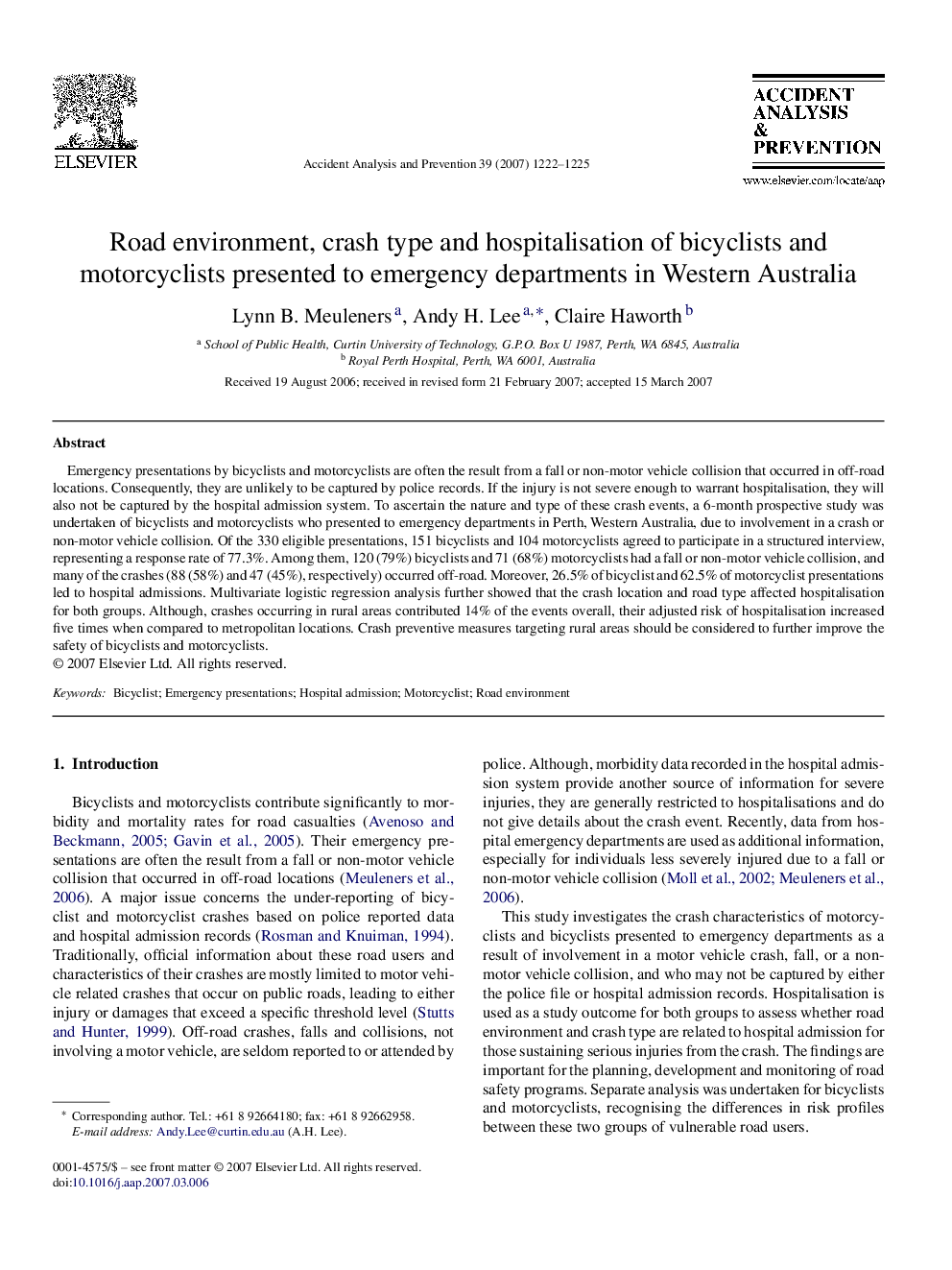| Article ID | Journal | Published Year | Pages | File Type |
|---|---|---|---|---|
| 573805 | Accident Analysis & Prevention | 2007 | 4 Pages |
Emergency presentations by bicyclists and motorcyclists are often the result from a fall or non-motor vehicle collision that occurred in off-road locations. Consequently, they are unlikely to be captured by police records. If the injury is not severe enough to warrant hospitalisation, they will also not be captured by the hospital admission system. To ascertain the nature and type of these crash events, a 6-month prospective study was undertaken of bicyclists and motorcyclists who presented to emergency departments in Perth, Western Australia, due to involvement in a crash or non-motor vehicle collision. Of the 330 eligible presentations, 151 bicyclists and 104 motorcyclists agreed to participate in a structured interview, representing a response rate of 77.3%. Among them, 120 (79%) bicyclists and 71 (68%) motorcyclists had a fall or non-motor vehicle collision, and many of the crashes (88 (58%) and 47 (45%), respectively) occurred off-road. Moreover, 26.5% of bicyclist and 62.5% of motorcyclist presentations led to hospital admissions. Multivariate logistic regression analysis further showed that the crash location and road type affected hospitalisation for both groups. Although, crashes occurring in rural areas contributed 14% of the events overall, their adjusted risk of hospitalisation increased five times when compared to metropolitan locations. Crash preventive measures targeting rural areas should be considered to further improve the safety of bicyclists and motorcyclists.
